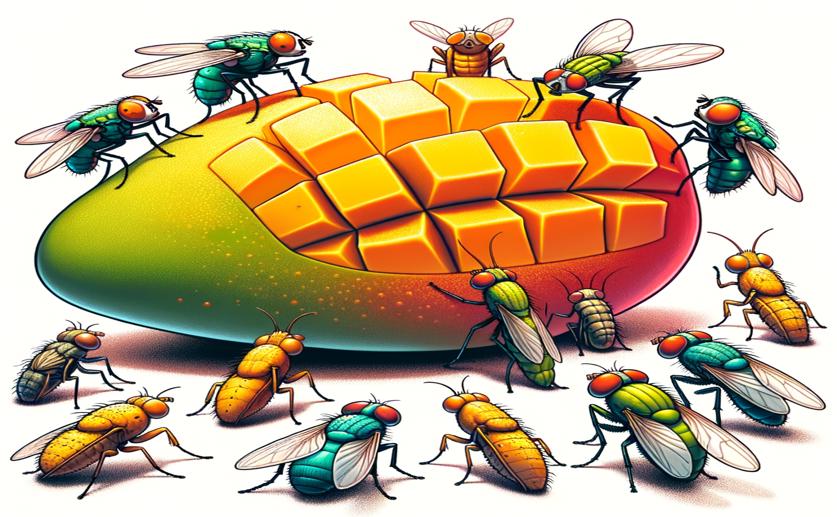
Mango Aroma Triggers Different Reactions in Fruit Flies and Their Parasites
Jenn Hoskins
8th May, 2024

Image Source: Natural Science News, 2024
Key Findings
- In sub-Saharan Africa, the marula fruit fly prefers mangoes, especially the Kent variety, due to the fruit's scent
- Parasitoids show varied attraction to mangoes based on the fruit's ripeness and infestation level
- Chemical analysis of mango scents could lead to eco-friendly pest control methods
References
Main Study
1) Mango headspace volatiles trigger differential responses of the mango fruit fly Ceratitis cosyra and its parasitoids.
Published 15th May, 2024 (future Journal edition)
https://doi.org/10.1016/j.heliyon.2024.e30068
Related Studies
2) Evidence for competitive displacement of Ceratitis cosyra by the invasive fruit fly Bactrocera invadens (Diptera: Tephritidae) on mango and mechanisms contributing to the displacement.
Journal: Journal of economic entomology, Issue: Vol 102, Issue 3, Jun 2009
3) Physiological mechanisms of dehydration tolerance contribute to the invasion potential of Ceratitis capitata (Wiedemann) (Diptera: Tephritidae) relative to its less widely distributed congeners.
4) Horizontal Transmission of Metarhizium anisopliae in Fruit Flies and Effect of Fungal Infection on Egg Laying and Fertility.



 2nd May, 2024 | Greg Howard
2nd May, 2024 | Greg Howard